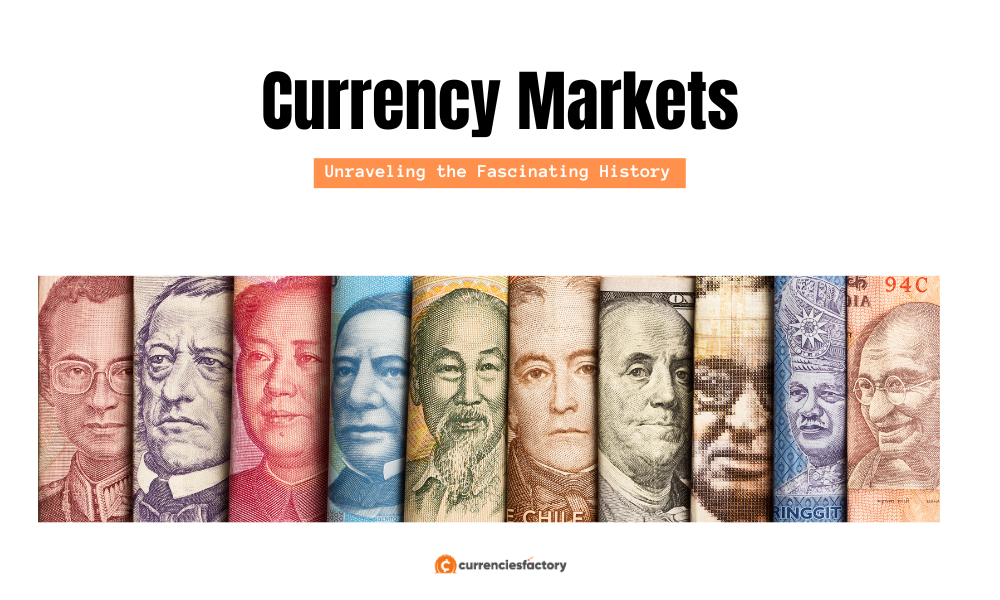
The world of currency markets has a rich and captivating history that spans thousands of years.
From the humble beginnings of barter systems to the complex forex trading we know today, the evolution of currencies has mirrored the progression of human society and commerce.
In this blog, we'll take you on an exciting journey through time, exploring the key milestones that have shaped the currency markets as we know them today.
| Are you a Tax Lawyer in USA? 👉Transform Your Brand: Click for Metamorphosis👈 |
In the earliest days of human civilization, currency as we understand it didn't exist. People relied on the barter system, exchanging goods and services directly.
This rudimentary form of trade allowed individuals and communities to meet their needs by swapping surplus resources, such as livestock, grains, and tools.
While practical for small-scale transactions, the barter system had its limitations, hindering the growth of more extensive trade networks.
As societies evolved, the limitations of barter systems became apparent.
To streamline transactions, communities started using commodities with intrinsic value as a medium of exchange. Shells, salt, and precious metals like gold and silver emerged as early forms of commodity money.
These items were widely accepted and carried a value that was universally recognized, thus laying the foundation for more sophisticated monetary systems.
The next significant development in currency markets came with the minting of coins. Ancient civilizations like the Greeks, Romans, and Chinese produced standardized coins with government backing, ensuring their authenticity and value.
As trade expanded, carrying large quantities of heavy coins became impractical, leading to the introduction of paper money.
In the 7th century, China pioneered the use of paper money, issued by merchants and governments as promissory notes.
This innovative concept spread along trade routes to the Middle East and Europe, revolutionizing the way transactions were conducted.
The Renaissance period saw the establishment of the first central banks, such as Sweden's Riksbank (1668) and the Bank of England (1694).
These institutions issued banknotes as a representation of the value of precious metals held in reserve.
The adoption of standardized currencies and banking systems provided greater stability and facilitated international trade.
The 19th century witnessed the widespread adoption of the gold standard, where paper money was backed by a specific amount of gold.
This system brought greater confidence and stability to global currency markets, ensuring that currencies were pegged to a fixed value of gold.
However, the gold standard faced challenges, particularly during times of economic turmoil. By the early 20th century, the Great Depression and World Wars eroded confidence in the system, leading many countries to abandon it in favor of fiat currencies backed by the government's trust.
With the rise of global trade and advancements in communication technology, foreign exchange (forex) trading emerged as a key player in currency markets.
Forex allowed individuals and institutions to trade currencies freely, taking advantage of fluctuations in exchange rates.
Over time, the forex market became the largest and most liquid financial market globally, with an average daily trading volume of trillions of dollars.
The market operates 24 hours a day, five days a week, reflecting the constantly evolving nature of international trade.
| Are you a Tax Lawyer in USA? 👉Transform Your Brand: Click for Metamorphosis👈 |
The history of currency markets is a tale of human ingenuity and innovation. From the humble barter system to the complex forex trading platforms of today, currencies have evolved in tandem with the evolution of societies and economies.
Understanding this fascinating history empowers us to appreciate the significance of currencies in our daily lives and underscores their essential role in shaping global trade and finance.
So, the next time you use your local currency or engage in forex trading, take a moment to reflect on the remarkable journey that has brought us to this modern financial landscape.